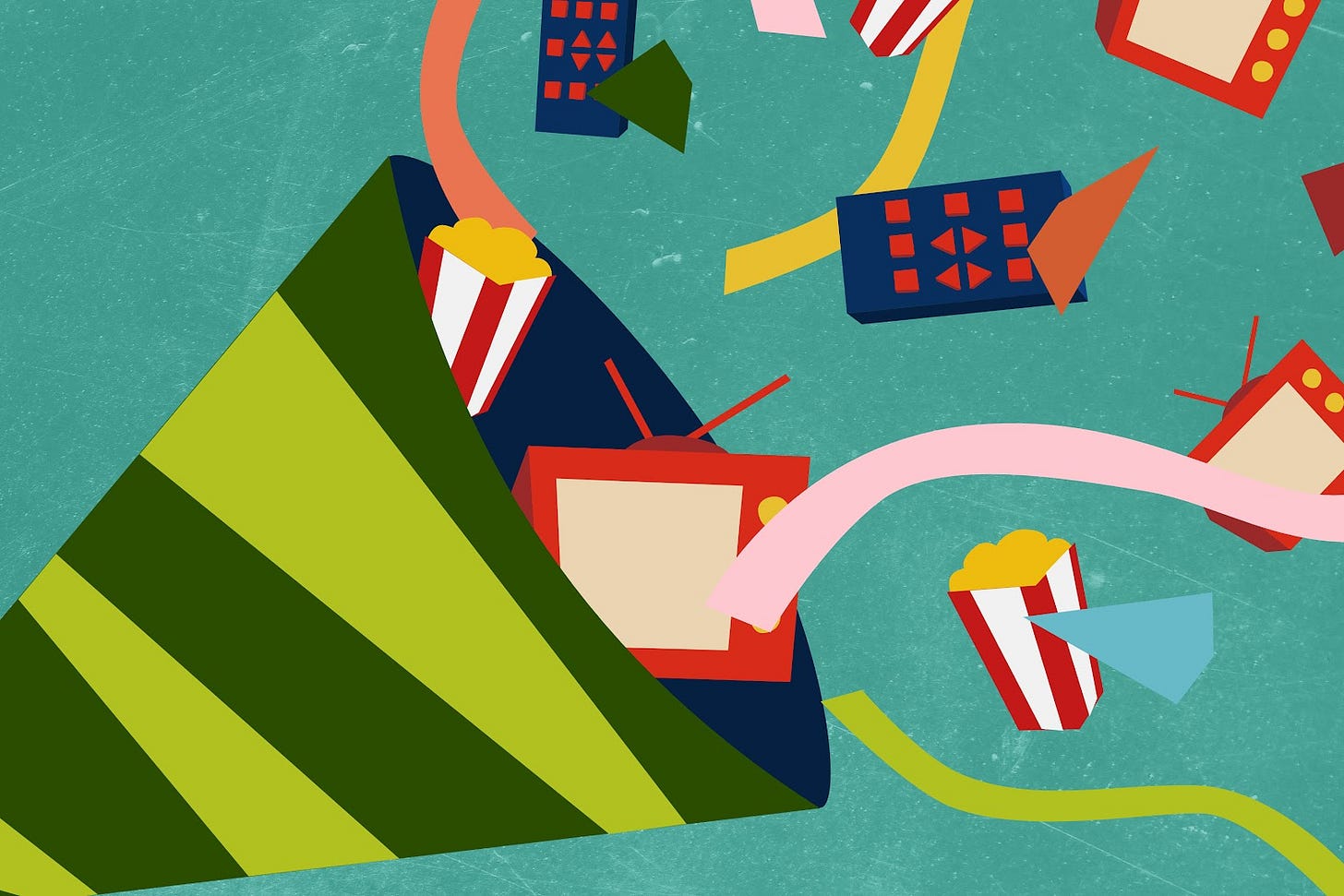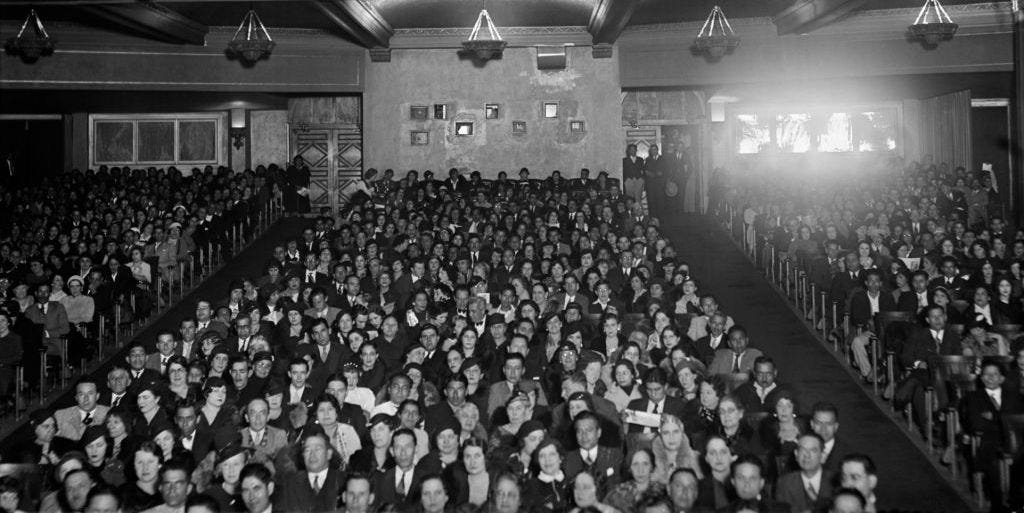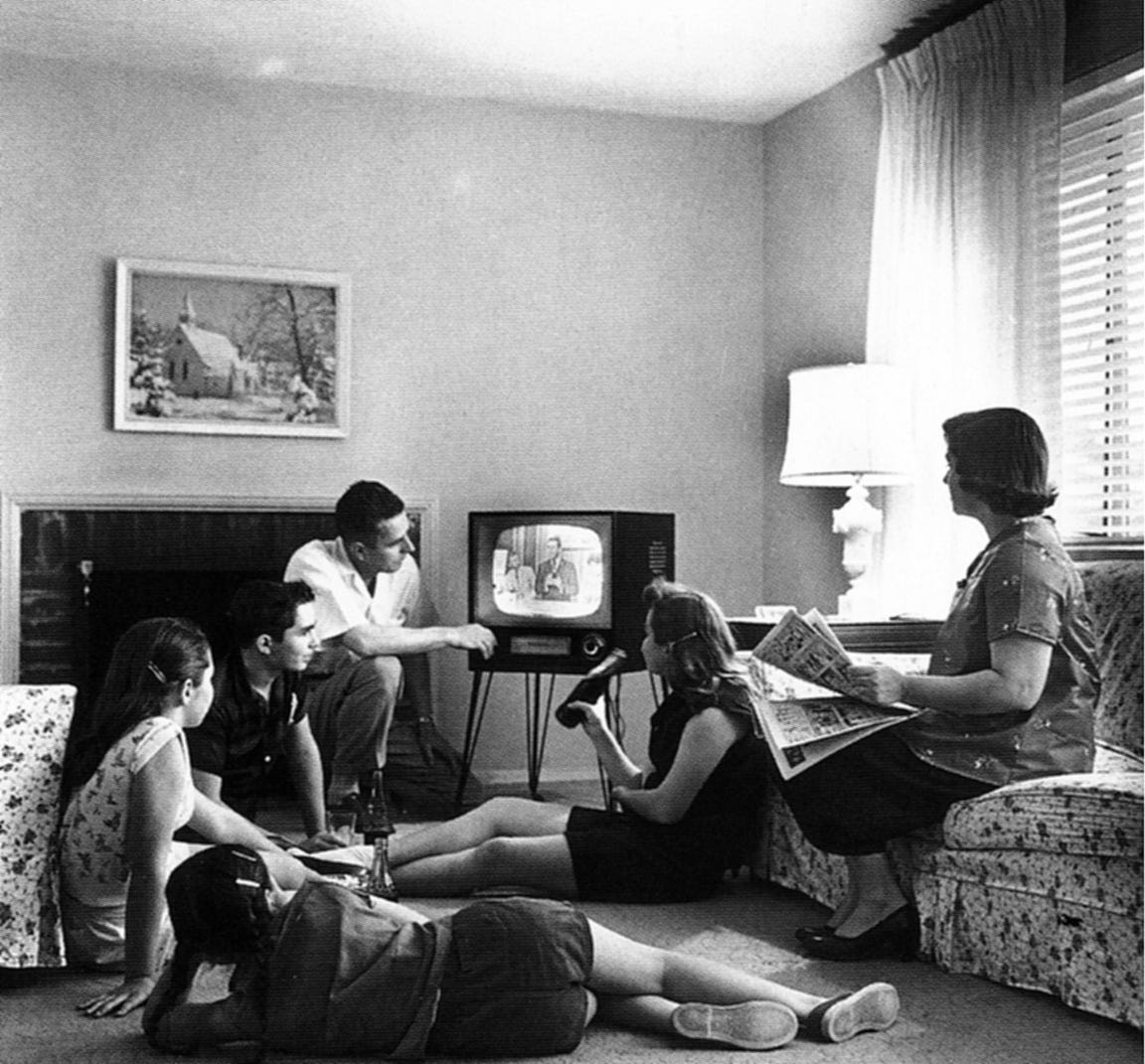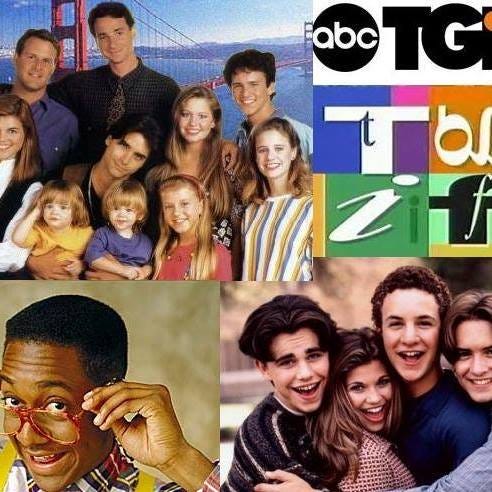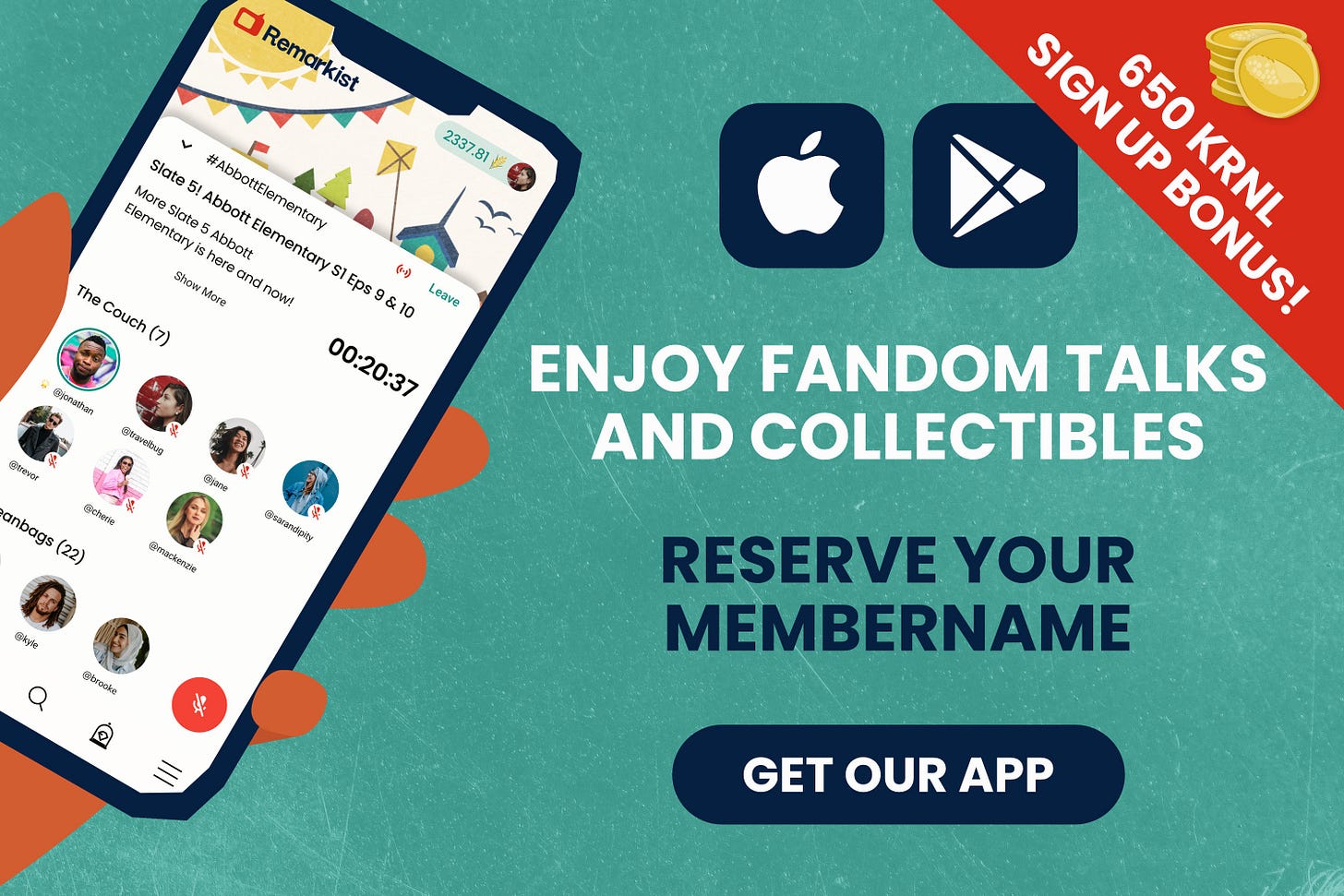The Online Watch Party: History of How To Join Others in Story
From appointment TV to streaming services, discover the evolution of sharing stories together and the rise of virtual watch parties.
For ages, people have been gathering in theaters to watch and enjoy stories together, a tradition that has followed us into the age of media. Even in the cinema’s earliest days, we happily paid to watch movies with strangers in big, dark rooms. Everyone would laugh and cry together as the images on the screen flickered by 📽. This shared experience hasn't changed much in over 3000 years. It's a powerful way to connect, feel empathy, and strengthen our social bonds. Just don't talk 🗣too much during the show if you want to keep any of those new friends!
In the 19th and 20th centuries, shared storytelling also moved from theaters and cinemas into our homes with reading parties for serialized fiction and later radio soap operas. And with the advent of television 📺, we could enjoy the full cinema experience with our friends and family right in our living rooms.
Appointment TV
In the 1950s, 60s, and 70s, there were only three US television networks: ABC, NBC, and CBS. And, of course, there were no VCRs or digital recorders–those wouldn’t be widely available for a while. If you wanted to be part of the national conversation around a particular TV show, you simply couldn’t miss it when it aired.
In the 1980s, cable TV was on the rise, and with it came more channels. An increase in programming ushered in a golden age of television in the 1990s, along with the newly coined phrase “appointment television.” NBC created an ad campaign in the mid-90s, calling their Thursday night lineup of popular shows (Friends, Seinfeld, etc.) “Must See TV.” The directive was clear in their promotions: you simply must see this, or you’ll be behind in next-day conversations at the proverbial “water cooler” (do these even exist anymore?).
ABC had its own version of can’t-miss TV with the “TGIF” block that lasted from the early 90s into the 2000s. It featured hits like Full House, Family Matters, Boy Meets World, and Step by Step. (Try being in middle school and missing that very important lineup in 1995. You’d be a cafeteria conversation outcast come Monday morning.) And you simply couldn’t miss the series finale of the very first American Idol 🎤(Kelly Clarkson, our queen) because what’s a bigger watch party than a competition show where the result is determined by audience vote? Watching the first winner of Survivor live as it aired was being part of a nationwide tribal council. Cable TV understood this concept as well. Shows like Sex and the City and The Sopranos were some of the most talked-about shows in history.
How many of us can look back to a time when we watched a popular sitcom every week with our families or gathered with friends and snacks 🍿 to watch an awards show broadcast? Even that very nostalgic, sentimental image is still depicted in popular shows and movies.
DVRs and streaming
The year 1999 was a lot of things: the end of a millennium and the start of a new one. Y2K fears loomed. But another thing happened that changed TV viewing: TiVo, the first at-home digital video recorder, was invented and marketed. Later, cable providers gave customers an embedded DVR option with their service. We could now record a broadcast and create a queue of saved content to watch at a more convenient time. Sure, some of us were already using VCRs to tape 📼our favorite stuff, but DVRs seemed like science fiction!
Today, of course, it’s hard to imagine a time when we didn’t have a queue of stuff to watch. By 2005, it was possible to stream TV and movies straight from the Internet through Apple and Netflix on demand. And now, with so much content at our fingertips, the term “binge-worthy” has replaced “appointment TV.” Our shared viewing is now asynchronous. But what do we lose when we binge? Among other things, we lose the sense of anticipation that comes with waiting to watch something with the rest of society. We lose that shared, real-time empathy and maybe even a bit of that social bond.
The evolution of the modern watch party
Watching TV together is different than at the cinema or public theater because you're in your own living room, on your own couch 🛋. You can react however you want, chat during commercial breaks or over dialogue, and even hit pause ⏸ to catch someone up who just joined in. Back in the day, a "virtual" watch party could be as simple as enjoying a show while sitting on the phone 📞 with a friend who was watching the same, cord wrapped around your fingers (we're showing our age here!)
Before streaming, our water cooler and lunch table conversations were all about what we had watched on TV the night before. Then the internet came along and expanded the experience. Fans could find chat rooms and blogs to keep talking about their favorite shows. Now, in the post-streaming world, we use social media to take it to a whole new level. It's like being back in the movie theater with strangers, watching and reacting together. But instead of talking out loud, we use Twitter hashtags to join a global 🌐 conversation with people we've never met.
We love to talk about the shows we watch in real time, so some public spaces have combined the at-home viewing experience with the movie-going experience. In the late 2000s, bars and restaurants hosted in-person watch parties for popular shows like Lost and Game of Thrones. It was like gathering to watch a big sporting event. Even The Bachelor features clips of fans hosting their own living room and sorority house watch parties.
On-demand viewing has given us access to a ton of content, but it has also led to a more isolated viewing experience. And during the pandemic, it became even harder to watch shows together in person; we had to find other options. Luckily, Zoom empowered us to watch shows over work-like conference calls, and Clubhouse gave us party lines for podcast-style viewing parties. Web plugins like Teleparty have allowed users to sync their streaming services on their own devices 🖥 and chat via text 📱while watching together. These alternatives are easy to use and free. All you have to do is enjoy the show and chat with your friends throughout.
The Remarkist watch party experience
At Remarkist, we deeply believe in the social and, especially, the conversational aspect of the watch party.
But we also think virtual watch parties bring us something special that’s harder to find in the real world. Consider that when we go to a movie to watch with others, we leave when the film ends and the lights in the theater rise. Appointment TV also ends in silence, with no post-show conversations to break down what we all just witnessed. And even when we do talk about it with friends the next day, or jump into a chat forum 💬 to post some memes of delight or shock, there’s still an element of separation.
What’s great about the online watch party is how we can now watch content together in massive worldwide theaters and then stick around to dig deeper into the stories we shared. Virtual events provide a variety of new tools to not only reclaim that social bond but improve on it.
Excuse us while we flex a bit 💪 but Remarkist is building a set of tools to experience stories with others in a uniquely personal way. Right now, our app has three simple tools for watching, experiencing, and discussing the shows and movies we love. More than a watch plug-in, these tools empower fans to build premium events:
Audio Dens
Remarkist audio dens are audio chat rooms where attendees gather virtually. Members can join in the live conversation or just listen if they prefer. Rather than group party lines, our Dens provide a space for live audio shows that turn the act of watching together into content of its own.
The Timer
An in-app timer ⏱ is important for keeping all attendees on the same timestamp while watching. An event host sets the timer at the start of a watch so that attendees can stay synced even if they arrive a few minutes late or lose their internet.
The Couch and the Beanbags
Since our platform began, we’ve been calling our stage “The Couch” and our audience “The Beanbags.” Premium Commentary content is becoming increasingly more casual and inclusive, and we believe the best of it (podcasts and news shows) brings its audience into the conversation.
The watch party as fan-created content
The heart ❤️ of the watch party experience, and fandom as a whole, lies in forming connections with fellow fans. Nowadays, discussing content is just as important as the content itself. Fan creators on social media and platforms like YouTube and Twitch have amassed huge followings, and celebrity rewatch podcasts let you watch your favorite show with the stars themselves!
Our Remarkist app is looking to take this a step further by not just connecting fans around group discussions but providing a live podcast-like experience with a rotating cast of fan hosts and guests.
The watch party has been around forever, but, call us biased, we think the upgrade it’s getting now in the social age is pretty awesome. And as fan communities continue to develop on the Remarkist app, we're excited to see how the watch party will continue to evolve. And we especially can't wait to hear what our fan creators bring to the virtual couch!



